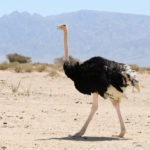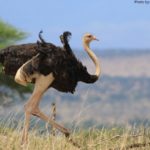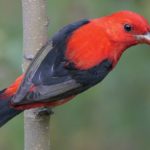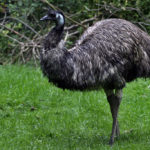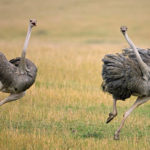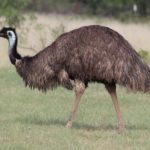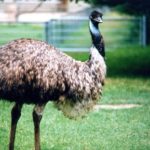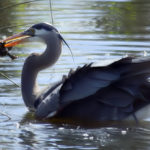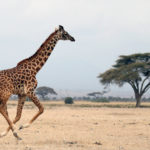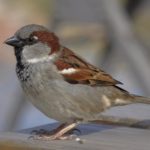Ostriches
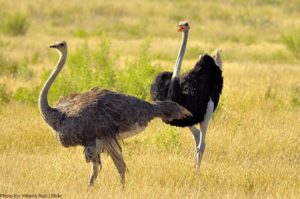 Nature endowed the ostrich bird with a huge growth – up to 2.5 meters in males, outstanding for birds weighing up to 250 kilograms, and a serious force: by banging the leg, it can bend a half centimeter iron rod. And how he runs! The horse will not steal.
Nature endowed the ostrich bird with a huge growth – up to 2.5 meters in males, outstanding for birds weighing up to 250 kilograms, and a serious force: by banging the leg, it can bend a half centimeter iron rod. And how he runs! The horse will not steal.
His long muscled legs end with two fingers: this makes it easier to run, and the ostrich effortlessly develops a speed of 50-70 kilometers per hour, supporting it for a long time. The length of his step is up to 3.5 meters; To slow down or change direction, it spreads its wings.
High growth gives a wide field of view, allowing the bird from a distance to distinguish between potential hazards. Such a strategic position combined with highly developed hearing and sight makes ostriches the born guardians and pilgrims of the steppes. Their huge eyes, they are larger than all other terrestrial vertebrates, are well adapted to desert conditions. Thick long eyelashes, and also a blinking membrane protect them from harmful sandy winds. And a wide ear hole, catching the weakest sounds, completes the perfect security system.
The life space of ostriches extends from dry treeless savannah to the borders of deserts. But they prefer semi-desert zones with a sufficient number of grasses. The day of the ostrich bird begins shortly before sunrise, and ends shortly after sunset, while the peak of activity falls on the first and last hours of daylight hours. Birds can tolerate extreme heat and even in the hottest hours do not seek shelter in the shade – their body temperature rises to 42 C, and thus they do not have to spend water on sweating. When night comes, ostriches, as a rule, return to the same place. Members of the group are located in such a way as to constantly see or hear each other.
The main concern of the ostrich bird is to find food, about 3.5 kilograms a day. Although ostriches prefer grains, fruits and flowers, sometimes they prey on insects, for example grasshoppers or locusts, on lizards and even eat small birds. Ostriches are gregarious birds. The size and structure of groups depends on the nature of the terrain and the time of the year. Usually, with the exception of the mating season, adult individuals gather in groups of 5-10 birds, although there are also single ostriches.
In desert areas or during a prolonged drought, you can see poultry ostrich accumulations around the water source. Young often form much larger groups, numbering up to 100 individuals. The structure of such associations is informal enough, everyone can join them or leave at will.
In the savannah of East Africa, ostrich females lay eggs mainly in August. When the breeding season begins, males build a nest in the very center of their possessions, which they will guard for five months. At this time they regularly publish a deep roar, remotely similar to the lion’s. Males cry to attract the attention of females to the nesting place and drive away other males from the matrimonial territory. The nest is a pit, about thirty centimeters deep and a meter in diameter.
Once the ostriches were monogamous. However, the barbarous extermination of males “on feathers” led to the fact that there were too many single females. To survive, ostriches were forced to resort to polygamy: around the male are concentrated several friends, one of whom plays the role of “the main wife”. It is she who alternately with the male and incubates the eggs. There are also “secondary” females in the family, laying their eggs in someone else’s nest. As a rule, they do not incubate chicks.
